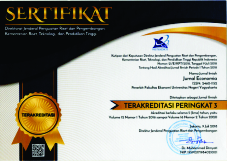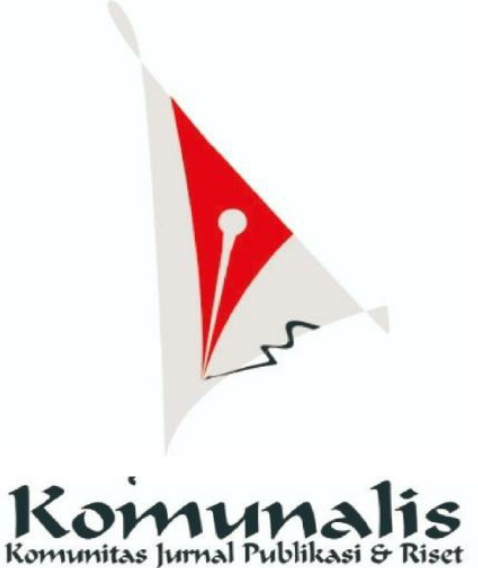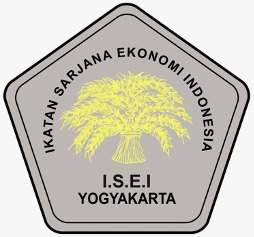Implication of Future Time Perspective and Hope on the Continuance Commitment of Hotel Employees
Downloads
Abstract: In the Indonesian hotel industry, high employee turnover rates are very common costly. One of the reasons that causes hotel employee turnover to be high is low commitment. The low commitment is triggered by the low hope of hotel employees to remain and to be committed to continuing their careers in the hotel where they are working today. Employees need certainty about their future that should be guaranteed by hotel management. This study tries to analyze the role of Future Time Perspective (FTP) and its effect on hope and continuance commitment. The data were derived from distributing questionnaires to hotel employees spread in 45 three-star hotels in Surabaya, and subsequently analyzed using the General Structured Component Analysis (GSCA) tool. The results show that FTP influences hope and continuance commitment significantly. Similarly, hope has a significant effect on continuance commitment. Hope is also able to act as a mediator between FTP and continuance commitment.
Keywords: hotel industry, future time perspective, hope, continuance commitment
Implikasi Future Time Perspective dan Harapan Terhadap Continuance Commitment Karyawan Hotel
Abstrak: Di industri perhotelan Indonesia, tingkat turnover karyawan yang tinggi sudah menjadi rahasia umum dan sangat memakan biaya. Salah satu alasan yang menyebabkan tingginya tingkat turnover karyawan hotel adalah komitmen yang rendah. Komitmen yang rendah tersebut dipicu oleh rendahnya tingkat harapan karyawan hotel untuk tetap tinggal serta berkomitmen untuk melanjutkan karir di hotel tempat mereka bekerja saat ini. Karyawan hotel membutuhkan kepastian akan masa depannya yang seharusnya bisa dijamin oleh pihak manajemen hotel. Penelitian ini mencoba menganalisa peran Future Time perspective (FTP) dan pengaruhnya terhadap harapan dan continuance commitment karyawan hotel. Data penelitian berasal dari penyebaran kuesioner kepada karyawan hotel yang tersebar di 45 hotel bintang tiga di Surabaya dan selanjutnya dianalisis menggunakan alat analisis General Structured Component Analysis (GSCA). Hasilnya menunjukkan bahwa FTP mempengaruhi harapan dan continuance commitment secara signifikan. Harapan juga berpengaruh secara signifikan terhadap continuance commitment. Harapan juga berperan sebagai mediator antara FTP dan continuance commitment.
Kata kunci: industri perhotelan, future time perspective, harapan, continuance commitment
Downloads
Albattat, A. R., Som, A. P. M., & Helalat, A. S. (2014). Higher Dissatisfaction Higher Turnover in the Hospitality Industry. International Journal of Academic Research in Business and Social Sciences, 4(2).
Allen, N. J., & Meyer, J. P. (1990). The Measurement and Antecedents of Affective, Continuance and Normative Commitment to the Organization. Journal of Occupational Psychology, 63(1), 1–18.
Bal, P. M., de Lange, A. H., Zacher, H., & Van der Heijden, B. I. J. M. (2013). A Lifespan Perspective on Psychological Contracts and Their Relations with Organizational Commitment. European Journal of Work and Organizational Psychology, 22(3), 279–292.
Bentein, K., Vandenberghe, C., Vandenberg, R., & Stinglhamber, F. (2005). The Role of Change in the Relationship Between Commitment and Turnover: A Latent Growth Modeling Approach. Journal of Applied Psychology, 90(3), 468–482.
BPS Surabaya. (2018). Kota Surabaya Dalam Angka 2018. https://surabayakota.bps.go.id/publikasi.html
Carstensen, L. L., Isaacowitz, D. M., & Charles, S. T. (1999). Taking Time Seriously: A Theory of Socioemotional Selectivity. American Psychologist, 54(3), 165–181.
Cernas-Ortiz, D. A., Mercado-Salgado, P., & Davis, M. A. (2018). Future Time Perspective, Job Satisfaction, and Organizational Commitment: The Mediating Effect of Self-Efficacy, Hope, and Vitality. Revista de Psicologia Del Trabajo y de Las Organizaciones, 34(1), 1–9.
í‡etin, F. (2011). The Effects of the Organizational Psychological Capital on the Attitudes of Commitment and Satisfaction: A Public Sample in Turkey. European Journal of Social Sciences, 21(3), 373–380.
Dwivedi, A., & Rastogi, R. (2016). Future Time Perspective, Hope and Life Satisfaction: A Study on Emerging Adulthood. Jindal Journal of Business Research, 5(1), 17–25.
Epel, E. S., Bandura, A., & Zimbardo, P. G. (1999). Escaping Homelessness: The Influences of Self-Efficacy and Time Perspective on Coping with Homelessness. Journal of Applied Social Psychology, 29(3), 575–596.
Ferrari, L., Nota, L., & Soresi, S. (2012). Evaluation of an Intervention to Foster Time Perspective and Career Decidedness in a Group of Italian Adolescents. Career Development Quarterly, 60(1), 82–96.
Fowler, D. R., Weber, E. N., Klappa, S. P., & Miller, S. A. (2017). Replicating Future Orientation: Investigating the Constructs of Hope and Optimism and Their Subscales Through Replication and Expansion. Personality and Individual Differences, 116, 22–28.
Fruiht, V. M. (2014). Beyond Wills and Ways: Expanding the Scope of Snyder's Hope Model to Understand the Transmission of Hope Through Fevelopmental Relationships. In ProQuest Dissertations and Theses. http://ezproxy.lib.ryerson.ca/login?url=https://search.proquest.com/docview/1645770215?accountid=13631%0Ahttp://sfx.scholarsportal.info/ryerson??url_ver=Z39.88-2004&rft_val_fmt=info:ofi/fmt:kev:mtx:dissertation&genre=dissertations+%26+theses&sid=ProQ:ProQ.
Guillon, O., & Cezanne, C. (2014). Employee Loyalty and Organizational Performance: A Critical Survey. Journal of Organizational Change Management, 27(5), 839–850.
Hofmann, V., & Stokburger-Sauer, N. E. (2017). The Impact of Emotional Labor on Employees' Work-life Balance Perception and Commitment: A Study in the Hospitality Industry. International Journal of Hospitality Management, 65, 47–58.
Holston-Okae, B. L., & Mushi, R. J. (2018). Employee Turnover in the Hospitality Industry Using Herzberg's Two-Factor Motivation-Hygiene Theory. International Journal of Academic Research in Business and Social Sciences, 8(1).
Hwang, H., Takane, Y., & Jung, K. (2017). Generalized Structured Component Analysis with Uniqueness Terms for Accommodating Measurement Error. Frontiers in Psychology, 8(DEC).
Juntunen, C. L., & Wettersten, K. B. (2006). Work Hope: Development and Initial Validation of a Measure. Journal of Counseling Psychology, 53(1), 94–106.
Ko, J. W., Price, J. L., & Mueller, C. W. (1997). Assessment of Meyer and Allen's Three-Component Model of Organizational Commitment in South Korea. Journal of Applied Psychology, 82(6), 961–973.
Kool, M., & Van Dierendonck, D. (2012). Servant Leadership and Commitment to Change, the Mediating Role of Justice and Optimism. Journal of Organizational Change Management, 25(3), 422–433.
Ludema, J. D., Wilmot, T. B., & Srivastva, S. (1997). Organizational Hope: Reaffirming the Constructive Task of Social and Organizational Inquiry. Human Relations, 50(8), 1015–1051.
Luthans, F. (2002). Positive Organizational Behavior: Developing and Managing Psychological Strengths. Academy of Management Executive, 16(1), 57–72.
Luthans, F., Avey, J. B., & Patera, J. L. (2008). Experimental Analysis of a Web-Based Training Intervention to Develop Positive Psychological Capital. Academy of Management Learning and Education, 7(2), 209–221.
McGee, G. W., & Ford, R. C. (1987). Two (or More?) Dimensions of Organizational Commitment: Reexamination of the Affective and Continuance Commitment Scales. Journal of Applied Psychology, 72(4), 638–641.
Meyer, J. P., & Allen, N. J. (1984). Testing the "Side-Bet Theory" of Organizational Commitment: Some Methodological Considerations. Journal of Applied Psychology, 69(3), 372–378.
Meyer, J. P., & Allen, N. J. (1991). A Three-Component Conceptualization of Organizational Commitment. Human Resource Management Review, 1(1), 61–89.
Meyer, J. P., Stanley, D. J., Herscovitch, L., & Topolnytsky, L. (2002). Affective, Continuance, and Normative Commitment to the Organization: A Meta-Analysis of Antecedents, Correlates, and Consequences. Journal of Vocational Behavior, 61(1), 20–52.
Nafei, W. (2015). The Effects of Psychological Capital on Employee Attitudes and Employee Performance: A Study on Teaching Hospitals in Egypt. International Journal of Business and Management, 10(3).
Park, I. J., & Jung, H. (2015). Relationships Among Future Time Perspective, Career and Organizational Commitment, Occupational Self-Efficacy, and Turnover Intention. Social Behavior and Personality, 43(9), 1547–1562.
Park, N., Peterson, C., & Seligman, M. E. P. (2004). Strengths of Character and Well-Being. Journal of Social and Clinical Psychology, 23(5), 603–619.
Qiu, H., Haobin Ye, B., Hung, K., & York, Q. Y. (2015). Exploring Antecedents of Employee Turnover Intention - Evidence of China's Hotel Industry. Journal of China Tourism Research, 11(1), 53–66.
Quinn, R. E., & Thakor, A. V. (2018). Creating A Purpose-Driven Organization. Harvard Business Review, July-August.
Reid, E., & Ramarajan, L. (2016). Managing the High-Intensity Workplace. Harvard Business Review, June, 84–90.
Rudolph, C. W., Kooij, D. T. A. M., Rauvola, R. S., & Zacher, H. (2018). Occupational Future Time Perspective: A Meta-Analysis of Antecedents and Outcomes. Journal of Organizational Behavior, 39(2), 229–248.
Snyder, C. R., Rand, K. L., King, E. A., Feldman, D. B., & Woodward, J. T. (2002). "False" Hope. Journal of Clinical Psychology, 58(9), 1003–1022.
Snyder, C. R., Sympson, S. C., Ybasco, F. C., Borders, T. F., Babyak, M. A., & Higgins, R. L. (1996). Development and Validation of the State Hope Scale. Journal of Personality and Social Psychology, 70(2), 321–335.
Sobel, M. E. (1982). Asymptotic Confidence Intervals for Indirect Effects in Structural Equation Models. Sociological Methodology, 13, 290.
Stinglhamber, F., Bentein, K., & Vandenberghe, C. (2002). Extension of the Three-Component Model of Commitment to Five Foci: Development of Measures and Substantive Test. European Journal of Psychological Assessment, 18(2), 123–138.
Tamer, I., & Dereli, B. (2014). The Relationship Between Interpersonal Trust, Peer Support and Organizational Commitment. í–neri Dergisi, 11(42), 175.
Tomic, I., Tesic, Z., Kuzmanovic, B., & Tomic, M. (2018). An Empirical Study of Employee Loyalty, Service Quality, Cost Reduction and Company Performance. Economic Research-Ekonomska Istrazivanja, 31(1), 827–846.
Zacher, H., & Frese, M. (2011). Maintaining a Focus on Opportunities at Work: The Interplay Between Age, Job Complexity, and the Use of Selection, Optimization, and Compensation Strategies. Journal of Organizational Behavior, 32(2), 291–318.
Zacher, H., & Yang, J. (2016). Organizational Climate for Successful Aging. Frontiers in Psychology, 7(JUL).
Zimbardo, P. G., & Boyd, J. N. (1999). Putting Time in Perspective: A Valid, Reliable Individual-Differences Metric. Journal of Personality and Social Psychology, 77(6), 1271–1288.
Zimmerman, R. D., Swider, B. W., & Boswell, W. R. (2019). Synthesizing Content Models of Employee Turnover. Human Resource Management, 58(1), 99–114.















